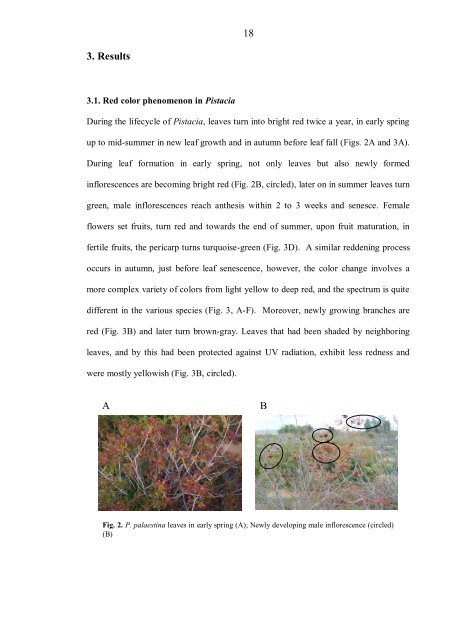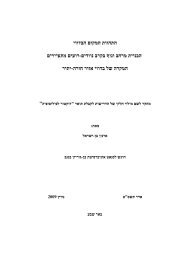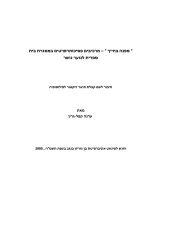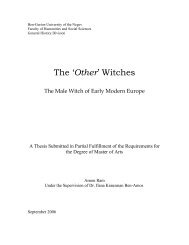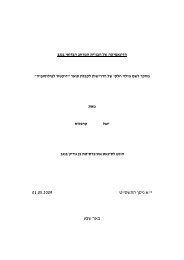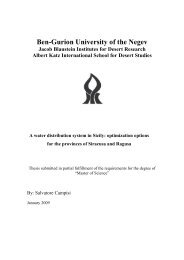Ben-Gurion University of the Negev
Ben-Gurion University of the Negev
Ben-Gurion University of the Negev
Create successful ePaper yourself
Turn your PDF publications into a flip-book with our unique Google optimized e-Paper software.
3. Results<br />
3.1. Red color phenomenon in Pistacia<br />
18<br />
During <strong>the</strong> lifecycle <strong>of</strong> Pistacia, leaves turn into bright red twice a year, in early spring<br />
up to mid-summer in new leaf growth and in autumn before leaf fall (Figs. 2A and 3A).<br />
During leaf formation in early spring, not only leaves but also newly formed<br />
inflorescences are becoming bright red (Fig. 2B, circled), later on in summer leaves turn<br />
green, male inflorescences reach an<strong>the</strong>sis within 2 to 3 weeks and senesce. Female<br />
flowers set fruits, turn red and towards <strong>the</strong> end <strong>of</strong> summer, upon fruit maturation, in<br />
fertile fruits, <strong>the</strong> pericarp turns turquoise-green (Fig. 3D). A similar reddening process<br />
occurs in autumn, just before leaf senescence, however, <strong>the</strong> color change involves a<br />
more complex variety <strong>of</strong> colors from light yellow to deep red, and <strong>the</strong> spectrum is quite<br />
different in <strong>the</strong> various species (Fig. 3, A-F). Moreover, newly growing branches are<br />
red (Fig. 3B) and later turn brown-gray. Leaves that had been shaded by neighboring<br />
leaves, and by this had been protected against UV radiation, exhibit less redness and<br />
were mostly yellowish (Fig. 3B, circled).<br />
A<br />
A B<br />
B<br />
Fig. 2. P. palaestina leaves in early spring (A); Newly developing male inflorescence (circled)<br />
(B)


